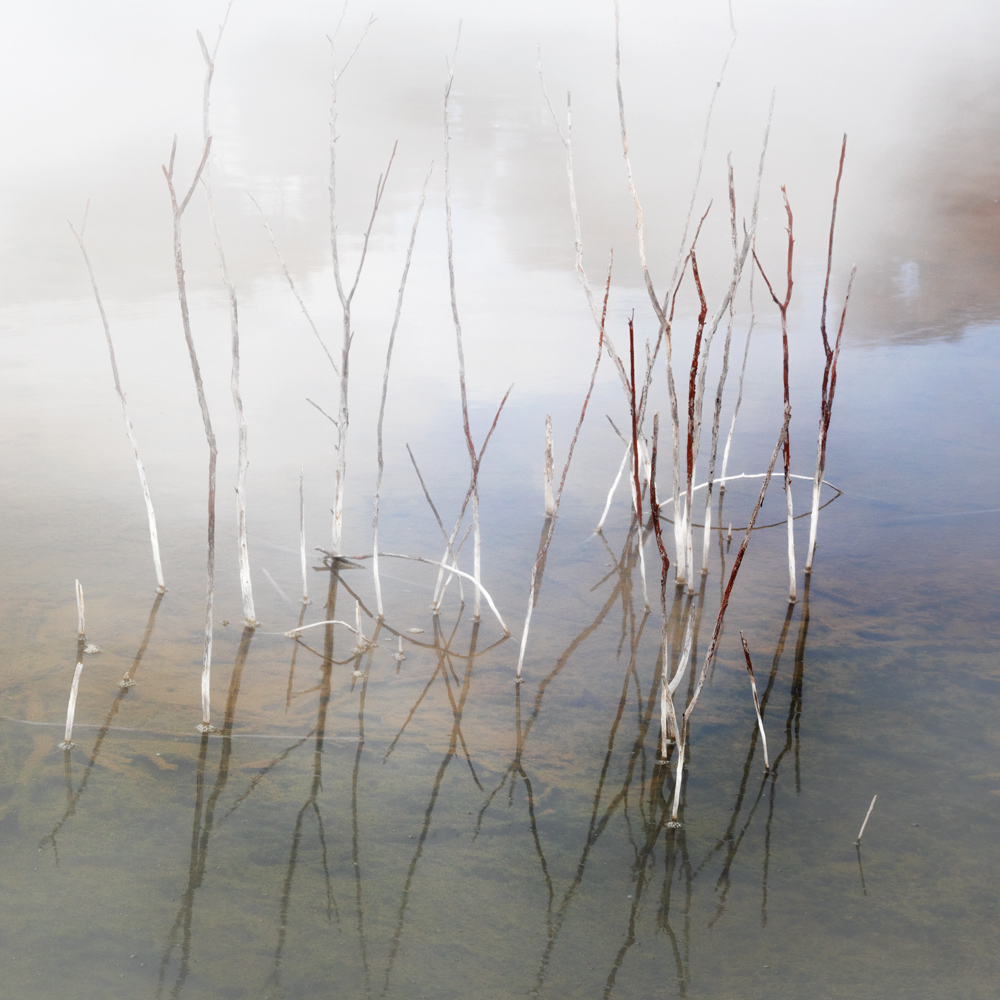spek·yuh·ler, dih·fyoos, and puh·loo·sid | /ˈspɛk yə lər, dɪˈfyus ænd pəˈlu sɪd/

As Narcissus discovered, placid bodies of water in the landscape can be excellent mirrors. Lakes, ponds, and puddles free of flux offer the best opportunities to peer at oneself in wonder and adoration, ideally when the air’s perfectly still. Under these conditions, the light will reflect at the same angle it hits the water’s surface, resulting in a clear and undistorted specular reflection. Disturbed or moving water scatters the light, creating more diffuse reflections, like impressionist reproductions of the sky often seen mirrored on the water’s surface.
As any landscape photographer can tell you, perfectly specular reflections are much rarer than Instagram and the like would suggest. More commonly, the water’s surface reflects the complexity of the local conditions – areas of specular clarity likely being mixed with wind-ruffled patches of diffused distortion. The opacity of the water also plays a part. Ideally, it will be pellucid – crystal clear and undisturbed to allow the maximum passage of undistorted light.
Other factors to consider include atmospheric haze and surface glare. To help remove these, photographers and narcissists alike can use polarised filters or sunglasses. Polarised lenses are composed of long molecules aligned in one direction to act like tiny slits, effectively cutting out the scattered light to give a more specular reflection. Photographers generally use adjustable circular polarisers that can be turned to block the offending glare relative to the light source. Unfortunately, they can also polarise the sky, creating ugly, unnatural looking tonal gradients. As Sod’s law would have it, this effect is most prevalent when the sun is low in the sky, during the coveted golden hour favoured by landscape photographers.
To better capture the subtleties of the thermal hot pool opposite, the polarising filter remained in my kit bag. The rising steam and convection currents in the water created reflections ranging from highly diffused to near specular. Likewise, the water varied from a milky murk to patches of pellucid clarity.
Introduction Aeolian Alpenglow
Benthos Crepuscular Crispate Crown shyness
Desire lines Dreich Endragoned Edgelands
Frondescence Fumarole Gluggaveður Gossamer
Karst Komorebi Lawrence Long acre
Machair Monkey’s wedding Moonglade
Psithurism Quartz Rakuyou Roaring forties
Snag Soft estate Specular, diffuse and pellucid
Spoondrift Steam fog Swash zone Sylvan